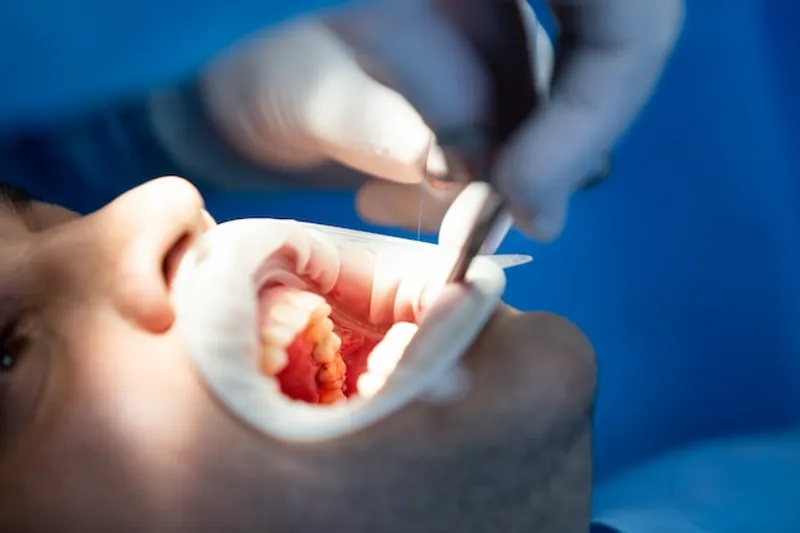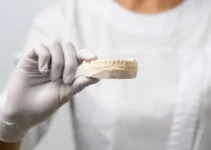Dental bridge replacement is a common procedure for those who have aging dental work that needs updating or have suffered damage to an existing bridge. This treatment restores functionality and aesthetics to your smile, helping you chew and speak more effectively. In this article, we’ll dive into the details of what dental bridge replacement involves, the types of bridges available, and what you can expect during the process. Understanding these aspects will help you make an informed decision about whether this dental solution is right for you.
What is a Dental Bridge Replacement?
A dental bridge replacement is a crucial solution for individuals who have lost one or more teeth. The procedure involves replacing a missing tooth (or teeth) by anchoring a prosthetic tooth to the adjacent natural teeth or dental implants. This solution not only restores the functionality and aesthetics of your smile but also prevents further dental complications that can arise from missing teeth.
The success of a dental bridge largely depends on the health of the surrounding teeth, gums, and bone structures. Hence, it becomes imperative to consult a dental specialist who has extensive experience in this field. With advancements in dental technology, modern dental bridges are more durable, natural-looking, and comfortable than ever before. Before opting for a dental bridge replacement, it’s essential to understand its definition, types, and the specific circumstances under which one might need it. This article will delve into these aspects to provide you with a comprehensive understanding.
Definition and Purpose
A dental bridge is a fixed dental restoration used to replace one or more missing teeth by joining an artificial tooth definitively to adjacent teeth or dental implants. The primary purpose of a dental bridge is to fill the gap created by missing teeth, thereby restoring the individual’s ability to chew and speak properly. Moreover, it helps in maintaining the shape of the face, preventing remaining teeth from drifting out of position.
Dental bridges are typically made of materials like porcelain, gold, alloys, or a combination of these. The selection of material depends on the location of the missing tooth, the function of the tooth, esthetic considerations, and the cost. The procedure for placing a dental bridge usually involves two visits to the dentist. During the first visit, the abutment teeth are prepared, and a mold is taken. The mold is used to fabricate the bridge, which is then fitted and adjusted during the second visit. The result is a permanent restoration that mimics the appearance and function of natural teeth.

Types of Dental Bridges
There are several types of dental bridges, each designed to meet specific dental needs and conditions. The four main types are:
- Traditional Bridges: These involve creating a crown for the tooth or implant on either side of the missing tooth, with a pontic in between. Traditional bridges are the most common type and are typically made of porcelain fused to metal or ceramics.
- Cantilever Bridges: These are used when there are adjacent teeth on only one side of the missing tooth or teeth. This type is not as common and is generally recommended for areas of the mouth that are under less stress, such as the front teeth.
- Maryland Bonded Bridges: Also known as a resin-bonded bridge, it consists of a false tooth held in place by a metal or porcelain framework. The framework is bonded onto the backs of the adjacent teeth. This type is typically used for missing front teeth and requires less tooth preparation.
- Implant-Supported Bridges: These are similar to traditional bridges but instead of being supported by crowns or frameworks, they are supported by dental implants. This type is generally used when more than one tooth is missing.
Each type of dental bridge has its advantages and disadvantages, which should be discussed with your dental specialist to determine the best option for your specific needs.
Who Needs a Dental Bridge Replacement?
A dental bridge replacement is typically recommended for individuals who have lost one or more teeth due to decay, gum disease, injury, or congenital conditions. Some signs that you might need a dental bridge replacement include:
- Difficulty chewing and speaking properly
- Noticeable gaps in your smile
- Shift in remaining teeth toward the empty space
- Jaw pain or discomfort
- Changes in the shape of your face
Beyond the cosmetic concerns, missing teeth can also lead to bone loss in the jaw, negatively affecting the surrounding teeth and gums. Therefore, it is crucial to address tooth loss promptly with a dental bridge replacement to maintain overall oral health.
Consulting a dental professional can help you determine if a dental bridge replacement is the right solution for you. They will conduct a thorough examination and discuss various options to ensure you achieve the best possible outcome.
If you found this article helpful, be sure to check out our other articles on dental health and treatments. Stay informed and maintain your beautiful smile!
How Long Does a Dental Bridge Last?
The longevity of a dental bridge primarily depends on various factors including the material used, the oral hygiene practices of the patient, and the precision of the dental procedure. On average, a dental bridge can last anywhere from 5 to 15 years. However, with excellent care, some bridges can even last more than 20 years. Several studies have shown that the type of material used plays a significant role in the durability of the bridge. For instance, bridges made from zirconia or porcelain fused to metal tend to be more durable and resistant to wear.
The key to the longevity of a dental bridge is meticulous oral hygiene. Failure to maintain good oral hygiene can lead to plaque buildup, which can cause gum disease and decay of the supporting teeth. Patients are advised to follow a stringent oral care routine, including brushing twice a day, flossing daily, and using an antiseptic mouthwash. Regular dental check-ups are also crucial. During these visits, your dentist can inspect the bridge for any signs of wear and tear and undertake necessary maintenance to prolong its life.
Other contributing factors to the lifespan of a dental bridge include the patient’s overall health, eating habits, and lifestyle choices. For example, excessive consumption of hard or sticky foods can cause damage to the bridge over time. Patients who partake in activities that risk dental trauma, such as certain sports, should take extra precautions or use protective mouthguards. According to clinical findings, lifestyle habits such as smoking or heavy alcohol consumption can also adversely affect the longevity of dental bridges. Therefore, adopting a healthier lifestyle can significantly enhance the lifespan of your dental restoration.
The Procedure for Replacing a Dental Bridge
Replacing a dental bridge is a routine procedure that can restore both the function and aesthetics of your smile. It’s important to understand the steps involved in this process to set appropriate expectations and ensure a successful outcome. With advancements in dental technology and materials, replacing a dental bridge has become more efficient and effective, providing patients with long-lasting results.
Whether due to wear and tear, decay, or structural damage, the need for replacing a dental bridge can arise for various reasons. The lifespan of a dental bridge typically ranges from 5 to 15 years, depending on oral hygiene practices and other factors. Upon noticing any issues with your current dental bridge, it is crucial to consult with a dental professional to evaluate the best course of action.
The procedure for replacing a dental bridge involves several critical stages, each ensuring that the new bridge fits perfectly and functions seamlessly. From the initial consultation to the final placement, every step is meticulously planned and executed to provide optimal results.
Initial Consultation and Assessment
Initial consultation is the first step in the process of replacing a dental bridge. During this appointment, your dentist will conduct a comprehensive evaluation of your oral health, including the condition of the existing bridge and the surrounding teeth and gums. This assessment usually involves a combination of visual examination, X-rays, and possibly digital scans to get a complete picture of your dental situation.
Based on the assessment, your dentist will discuss the possible causes for the replacement and outline the best treatment options. Common reasons for replacing a dental bridge include decay under the bridge, damage to the bridge itself, or issues with the supporting teeth. Your dentist will also consider your overall health and any pre-existing conditions before recommending a specific treatment plan.
During the consultation, it’s essential to communicate any concerns or preferences you may have regarding the replacement. This open dialogue ensures that your dentist can tailor the treatment to meet your unique needs and expectations. Questions related to materials, aesthetics, and longevity of the new bridge should be addressed thoroughly during this phase.
Steps Involved in the Replacement Process
The replacement process for a dental bridge typically involves several key phases:
- Preparation: After the initial consultation, the next step is to prepare the abutment teeth (the teeth supporting the bridge). This may involve removing the existing bridge and cleaning any decay or damage present. In some cases, a temporary bridge is placed to protect the prepared teeth while the new bridge is being fabricated.
- Impressions: Accurate impressions of your teeth and gums are crucial for the fabrication of a well-fitting bridge. These impressions can be taken using traditional molds or digital scanning technology, ensuring precision and comfort.
- Fabrication: The impressions are sent to a dental laboratory, where skilled technicians create the new bridge. This process can take a few weeks, during which your dentist will stay in close communication with the lab to ensure that the final product meets all specifications.
- Fitting and Adjustment: Once the new bridge is ready, it is carefully fitted to ensure a perfect match. Your dentist will make any necessary adjustments to achieve the best possible fit and function. This step is crucial to ensure that the bridge not only looks natural but also feels comfortable and functions effectively.
After the fitting, you will be given detailed care instructions to maintain your new bridge. Proper oral hygiene and regular dental check-ups are essential to extend the lifespan of the dental bridge and ensure its long-term success.
By understanding the procedure for replacing a dental bridge, you can approach the process with confidence and clear expectations. For more in-depth information on other dental procedures and to stay updated with the latest advancements in dental care, be sure to read our other articles.
Frequently Asked Questions About Dental Bridge Replacement
If you’re considering replacing a dental bridge or wondering about the procedure, these FAQs can provide you with the essential insights.
What is the typical lifespan of a dental bridge and when should it be replaced?
The lifespan of a dental bridge typically ranges from 5 to 15 years, depending on factors such as the material used, the quality of the installation, and how well it is maintained. It should be replaced when it shows signs of wear or damage, if there are changes in the fit due to changes in your dental structure, or if you experience pain or discomfort.

My name is Salman Kapa, a 73-year-old expert in bone regeneration and dental implantology. With decades of experience in the field, I am dedicated to advancing our understanding of oral health and hygiene. Through my research and writing, I aim to contribute to the development of innovative solutions in dental care.




